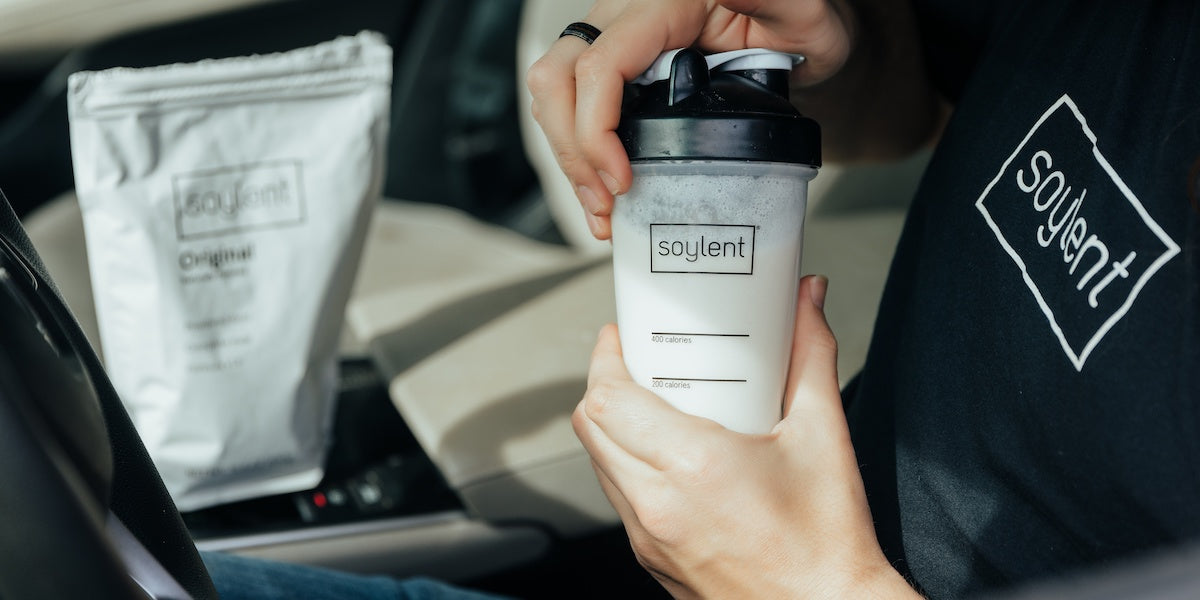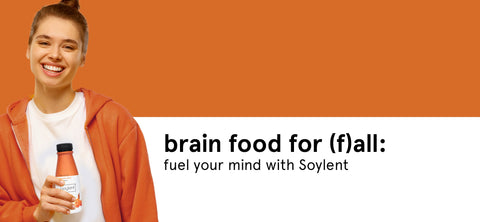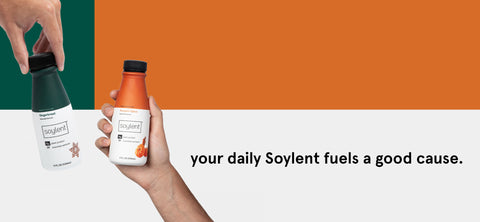
In recent years, many experts in the nutrition community have warned of the negative effects of the long-term overconsumption of sugar.
Millions have replaced their usual addition of a spoonful of sugar to their morning coffee with a packet of Splenda instead.
We incorporate a small amount of sucralose (Splenda’s artificial sweetener base) into Soylent.
What was the reason behind this decision? And how does sucralose compare to regular table sugar?
Let’s explore the history and health outcomes of this revolutionary sweetener and discover the role it plays in our Chocolate High Protein Shake.
The Birth Of Sucralose
In 1976, a British sugar company tasked their scientists with discovering chemical intermediates (beneficial products of a chemical reaction) for sucrose. One of their team members misunderstood instructions about a substance he was working on. Rather than testing the substance, he tasted the substance, discovering that it was incredibly sweet.
Thus, sucralose was born.
Johnson & Johnson teamed up with British company Tate & Lyle to develop Splenda, a new science-backed sweetener released in 1999. Shortly after its release, Splenda became one of the most popular artificial sweeteners on the market.
It’s become integral in many sugar-free cookie recipes, thousands of different food products, and millions of morning cups of tea and coffee.

The Secret To Sucralose’s Success
Unlike other artificial sweeteners like aspartame and saccharin, sucralose is made from real table sugar.
It’s simple sucrose (table sugar) concentrated to an extreme point, rendering it 600 times sweeter than regular sugar.
Scientists created sucralose through the controlled substitution of sugar’s caloric structures for calorie-free structures.
Calories are a measure of energy locked within the food we eat. When food enters your digestive system, enzymes within your stomach and intestines break down the food particles, unlocking energy, processing it, and distributing it throughout the body.
Sucralose retains the sweetness structure of sugar while swapping out the digestible energy structures known as hydroxyl for indigestible chlorine.
The result is a sweetener that still tastes sweet yet passes through your digestive system without being broken down into energy.
In Splenda, the most common form of sucralose consumption is not truly zero-calorie as the formula incorporates carbohydrates dextrose and maltodextrin, bringing the energy content to around three calories per gram.
However, because sucralose itself is so sweet, the average person likely couldn’t consume enough Splenda for the calories to register on any meaningful scale.

Is Sucralose Bad For You?
Governments and food associations worldwide, including the FDA and Health Canada, approve of sucralose as a healthy, artificial sweetener choice. The sweetener appears in thousands of products like toothpaste, chewing gum, packaged foods, beverages, and ready-made meals.
Countless longitudinal studies across the U.S. and the U.K fail to find any increased cancer risk associated with moderate sucralose intake.
Despite this, many consumers wrongfully believe sucralose has a link with increased cancer risk or other adverse long-term health effects.
The Food and Drug Administration tested moderate to heavy sucralose intake on animals in search of any negative reproductive, neurological, or cancerous effects, finding none.
Sucralose and Weight Management
There is an ongoing myth that consuming man-made sweeteners makes you gain weight, but the research is varied and does not show this correlation.
Some studies find no link between artificial sweetener substitutes and long-term weight loss. Others point to mild weight loss in the range of a couple of pounds or so.
This is likely more of a psychological effect than a dietary effect.
Some studies find that those who swap regular soda for diet soda make up for the calories they don’t consume by eating more. The hypothesis is that consumers conduct a form of mental accounting in their daily food consumption. Once they know that they’re cutting out calories by cutting out sugar, they feel more comfortable having an extra snack throughout the day.
Sucralose and Blood Sugar
One of the most apparent benefits of sucralose is for those living with diabetes.
Consuming large amounts of sugar can be dangerous for those with diabetes, as their bodies can’t produce enough insulin to counteract a rapid spike in blood sugar.
Artificial sweeteners, on the other hand, can’t be digested by the body, so they might be the perfect option for someone on a low-sugar diet.
However, some studies find that sucralose can still lead to a small blood sugar spike in those that don’t regularly consume it. The leading theory is that the body anticipates sweetness on the tongue as a forerunner of sugar in the blood, so it floods the bloodstream with insulin to counteract sugar that never arrives. This effect dissipates once the body grows accustomed to sucralose. In those who consume moderate amounts daily, the body experiences minimal, if any, blood sugar or insulin spikes.
Don’t Forget The Alternative
When discussing the pros and cons of any new sweetener, it’s important to take a step back and look at the alternative: sugar.
While scientists fail to find conclusive evidence of long-term, adverse health effects of artificial sweeteners like sucralose, the same can’t be said of sugar.
Numerous studies demonstrate the lasting, adverse effects of long-term overconsumption of sugar, like insulin resistance, increased risk of type 2 diabetes, and weight gain. The brain can develop dependencies on sugar just as it might on mood-altering substances.
This isn’t to say you should cut sugar out of your diet entirely.
However, the science is clear. When it comes to sugar, too much consumption for too much time ebbs into dangerous territory.

Enjoy Guilt-Free Sweetness With Soylent
The U.S. Food and Drug Administration designates sucralose “generally recognized as safe (GRAS)” - which, in layman's speak, is “scientifically safe.” After decades of research and thousands of peer-reviewed studies, scientists have yet to find any negative, long-term health effects of those who consume sucralose.
Of course, the adage stands strong here — everything in moderation.
That’s why we only use a tiny amount of sucralose in our Soylent formula.
It provides the optimal foundation for our Original shake and offers a great starting point for our flavored Soylent products like Complete Energy Chocolate and creamy Banana.
If you’re curious about other trusted ingredients in Soylent, browse our blog to learn everything there is to know about soy protein isolate and allulose, a superstar sugar substitute.







